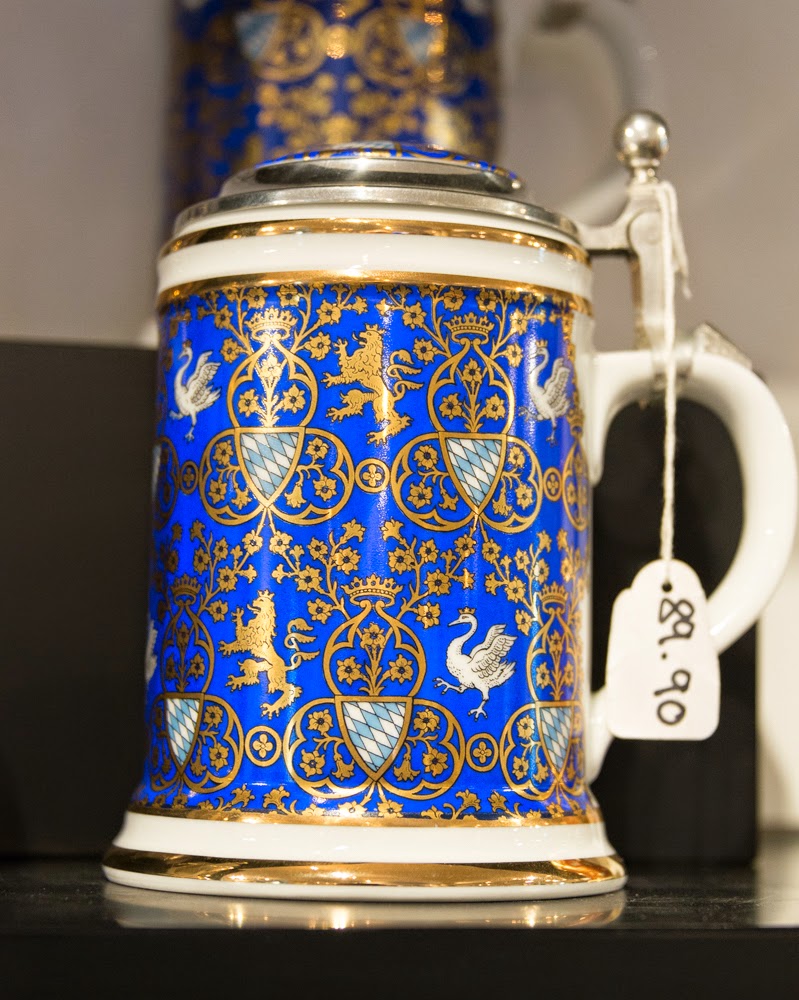The All Classical contingent and Matthew pose by the ship.
 |
| Tyson Verse photo |
Local guides joined our buses in Munich for a brief tour of the city.
We drove past the site of the 1972 Olympic Games.
We stopped at Nymphenburg Palace to walk on the grounds for a bit, and to check out the gift shop.
The palace grounds, on the opposite side of a pond that's part of a canal.
Gilded lanterns on the staircases.
Some lovely things for sale in the gift shop.
Exiting the gift shop; more gold on the façade of the building.
Dormers in the roof of a palace outbuilding. Not the shape we would see in the United States; ours generally have peaked roofs with gable ends.
We drove along the canal as we left. The emperor had intended it to extend through the city like the canals in Amsterdam, but money for construction ran out. The canal is too short to be a transportation link; it's just decorative.
The original Löwenbräu beer hall. It's interesting to see the wording on the sign. The first two lines say "Big New Year's Eve Gala" in German. The third line incorporates English: "mit Showacts & Liveband". They've made German words by running English words together. Rather like the French with "le weekend".
Cartier again, at the corner of Falckenbergstraße and Maximilianstraße. The high-rent district.
The gothic façade of the city hall, in Marienplatz.
Animated clockwork figures, and flower boxes.
A gilded statue of Mary and the baby Jesus. Marienplatz means Mary's Square or Our Lady's Square.
Old Town Square in Prague had an Astronomical Clock. This one in Munich seems to be an Astrological Clock.
City Hall would be Rathaus in German, so this is its cellar — a restaurant or beer hall.
Bavarian evolution.
A large part of our group stopped for a brew and something to eat at the famous Hofbräuhaus.
This picture is interesting just for the date near the bottom: Anno 1589. Serving beer continuously for 425 years.
Directly across from the Hofbräuhaus was the Hard Rock Cafe, and next that was the Ayinger Inn. It was much quieter and less crowded than the HB, so some of us gave it a try.
It was delightful, with good beer and good food.
Walking back to the bus, another sign that's entirely in English.
This graffiti's in German, though: "Thus spoke Sheba: Be THANKFUL".
Not many of us look good in Lederhosen. Tyson manages to pull it off. ;-)
Up VERY early the next morning to catch the bus to the airport and the long flight home. It's been a memorable trip.
And that's the end of this travel blog. I hope to see you on a future All Classical / Earthbound Expeditions trip.









































































































